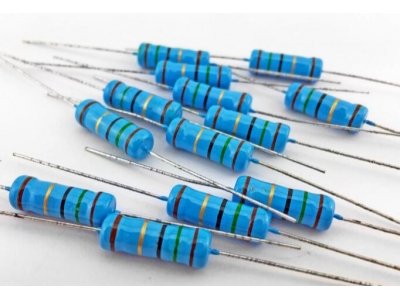The Basics of Surface Mount Resistors
Introduction to Surface Mount Resistors
In the field of electronics, passive components like resistors play a crucial role in controlling current flow and voltage levels. One common type of resistor used in modern electronic devices is the Surface Mount Resistor, also known as a SMD resistor or chip resistor. In this article, we will provide an overview of surface mount resistors, their construction, properties, and applications.
What are Surface Mount Resistors?
Surface mount resistors are miniaturized resistors designed to be mounted directly onto the surface of a printed circuit board (PCB). They are typically rectangular in shape and have conductive terminals at each end for soldering onto the PCB. Surface mount resistors are widely used in modern electronic devices due to their small size, high reliability, and mass producibility.
Construction and Materials
Surface mount resistors are made of a resistive element, which is a conductive material with specific resistance value, and a protective coating. The resistive element is typically made of metals like thin film or thick film, or a combination of metal alloys. These materials are chosen for their stability, temperature coefficient, and resistance tolerance. The protective coating, usually made of epoxy or ceramic material, shields the resistive element from environmental factors and protects it from damage during handling and soldering.
Properties of Surface Mount Resistors
Surface mount resistors have several important properties that determine their performance and compatibility with different applications:
- Resistance Value: Surface mount resistors are available in a wide range of resistance values, from a few ohms to several megaohms.
- Tolerance: The tolerance of a surface mount resistor indicates the maximum deviation in its resistance value. Common tolerance values include 1%, 5%, and 10%.
- Power Rating: The power rating of a surface mount resistor determines how much power it can dissipate without overheating. It is important to choose a resistor with an appropriate power rating for the desired application.
- Temperature Coefficient: Surface mount resistors are sensitive to temperature changes, which can affect their resistance value. The temperature coefficient specifies the change in resistance per degree Celsius.
Applications of Surface Mount Resistors
Surface mount resistors are widely used in various electronic applications, including:
- Consumer Electronics: They are used in smartphones, laptops, televisions, and other consumer electronic devices.
- Automotive Electronics: Surface mount resistors are used in vehicle control systems, lighting systems, and entertainment systems.
- Industrial Electronics: They are used in power supplies, control panels, and communication equipment.
- Medical Devices: Surface mount resistors find applications in medical instruments, monitoring devices, and imaging systems.
Overall, surface mount resistors are essential components in modern electronics, providing precise resistance values and reliable performance. Understanding their construction, properties, and applications can help engineers and hobbyists in designing and troubleshooting electronic circuits.
Thank you for reading this article. We hope that it has provided you with useful insights into the world of surface mount resistors and their importance in electronic devices.
